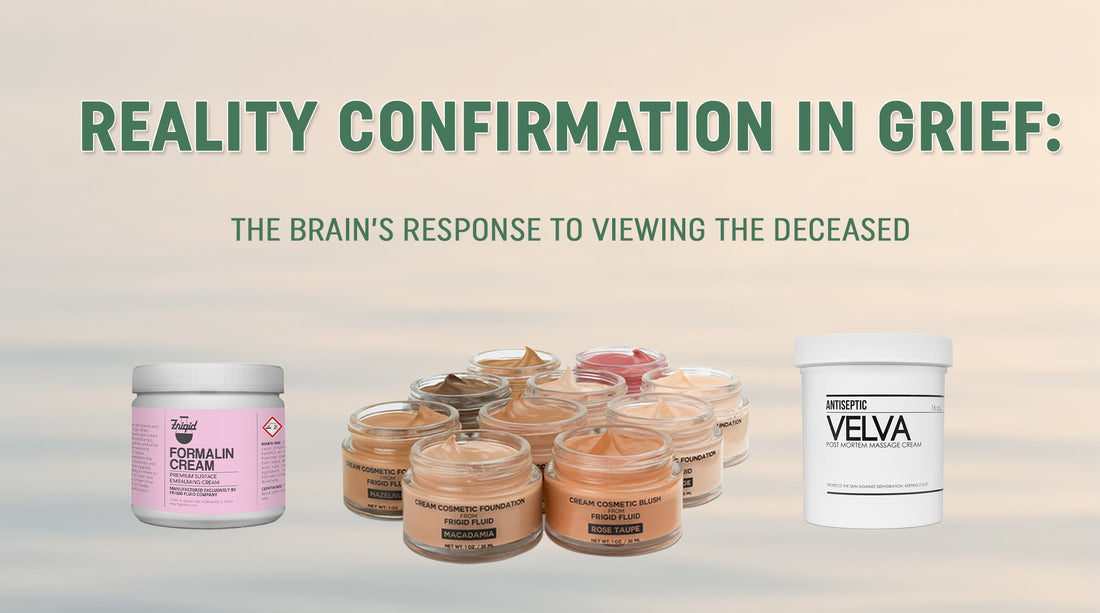When someone we love dies, our brain has to do more than acknowledge the fact, it has to accept it. That acceptance isn’t just an emotional milestone; it’s a neurological process. Viewing the body can be one of the most important steps in helping the brain navigate from the shock of loss toward healing.

The Brain’s Need for Reality Confirmation:
Seeing the deceased provides what psychologists call reality confirmation. It’s the moment when the brain’s prefrontal cortex (our logical decision-maker) and hippocampus (our autobiographical memory center) reconcile what we’ve been told with what we can see. Without that sensory input, parts of the brain can remain in an unresolved “search mode,” driven by the nucleus accumbens and reward circuits that still long for the person.
Engaging Memory and Meaning:
Viewing also activates the amygdala, the brain’s emotional hub, and stimulates the retrieval of memories stored in the hippocampus. These memories help weave the loss into our life story, a function supported by the medial prefrontal cortex and the default mode network, which are responsible for self-reflection and meaning-making.
Molecules of Grief
In acute grief, the brain and body release a cocktail of stress and attachment-related chemicals:
- Cortisol – Heightens stress and alertness.
- Norepinephrine – Triggers emotional arousal.
- Oxytocin – Strengthens feelings of attachment and longing.
- Dopamine – Keeps the brain “seeking” the lost loved one.
When the loss is processed over time, cortisol levels stabilize, dopamine-driven searching subsides, and serotonin increases, supporting emotional stability.
How Embalming Contributes to Grief Resolution:
This is where the craft and science of embalming play a vital role. A restorative presentation, natural skin tone, peaceful expression, dignified appearance, helps the mourner’s brain integrate the reality of death without being overwhelmed by trauma or distress. In neurological terms, this reduces the overactivation of the amygdala and allows the prefrontal cortex to remain engaged in emotional regulation.
Without restorative work, distressing visual cues can imprint themselves in the hippocampus, making it harder to reconcile the loss and potentially contributing to prolonged or complicated grief. In contrast, skilled embalming creates an environment where the mourner can engage memories, say goodbye, and begin to release the longing that characterizes unresolved grief.
A Healing Encounter:
Viewing isn’t just a tradition, it’s a neurobiological intervention. It helps the brain confirm the loss, engage in meaning-making, and regulate the intense emotions of bereavement. Embalming ensures that this encounter is not defined by shock or distress, but by dignity and peace, conditions that allow the mind and heart to take the first steps toward acceptance and healing.
____________________________________________________________________________________Cardoso, A., Arias‑Carrión, Ó., Paes, F., & Pinho de Oliveira Ribeiro, N. (2014). Neurological aspects of grief. CNS & Neurological Disorders – Drug Targets, 13(6), 930–936. https://doi.org/10.2174/1871527313666140612120018
O’Connor, Mary-Frances. “Bereavement and the Brain: Invitation to a Conversation between Bereavement Researchers and Neuroscientists.” Death Studies, vol. 29, no. 10, Dec. 2005, pp. 905–22. DOI.org (Crossref), https://doi.org/10.1080/07481180500299063.
O’Connor, Mary-Frances. “Grief: A Brief History of Research on How Body, Mind, and Brain Adapt.” Psychosomatic Medicine, vol. 81, no. 8, Oct. 2019, pp. 731–38. DOI.org (Crossref), https://doi.org/10.1097/PSY.0000000000000717.
Chapple, A., and S. Ziebland. “Viewing the Body after Bereavement Due to a Traumatic Death: Qualitative Study in the UK.” BMJ, vol. 340, no. apr30 2, Apr. 2010, pp. c2032–c2032. DOI.org (Crossref), https://doi.org/10.1136/bmj.c2032.


